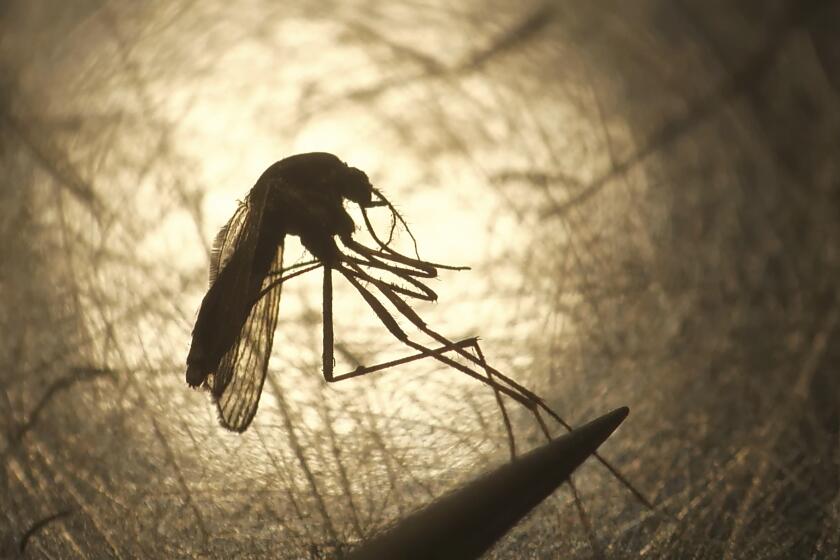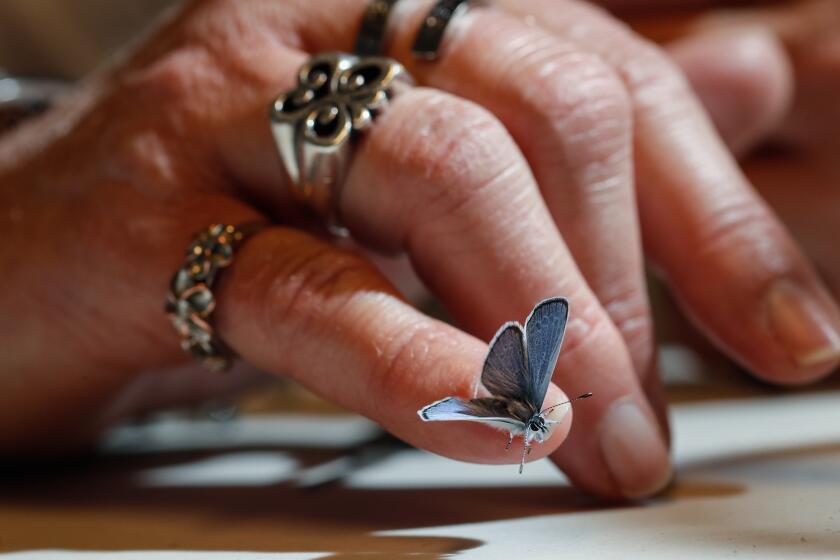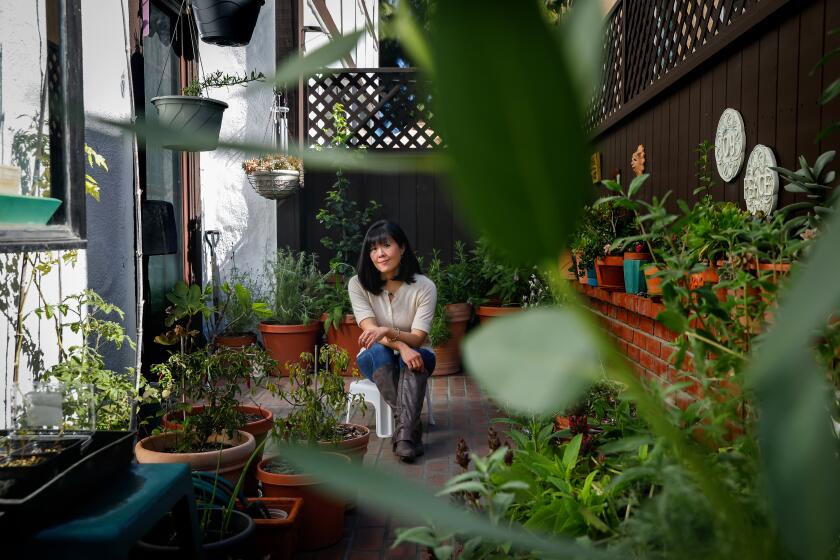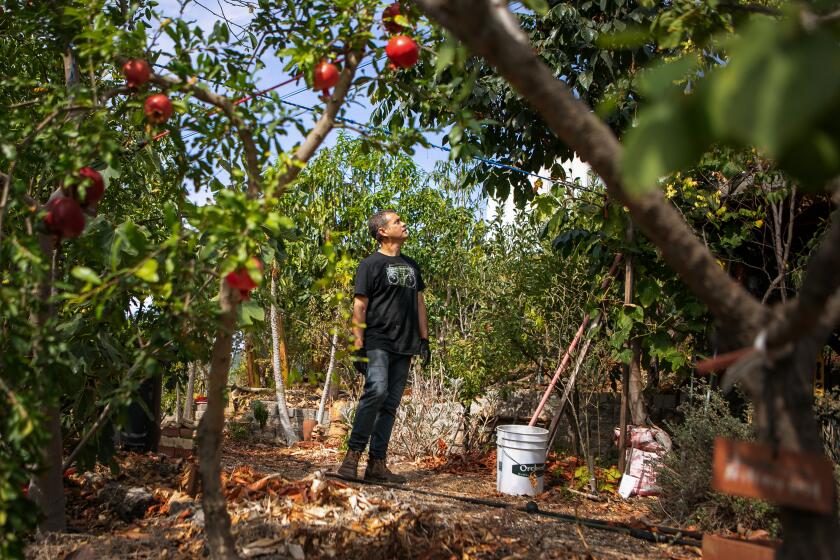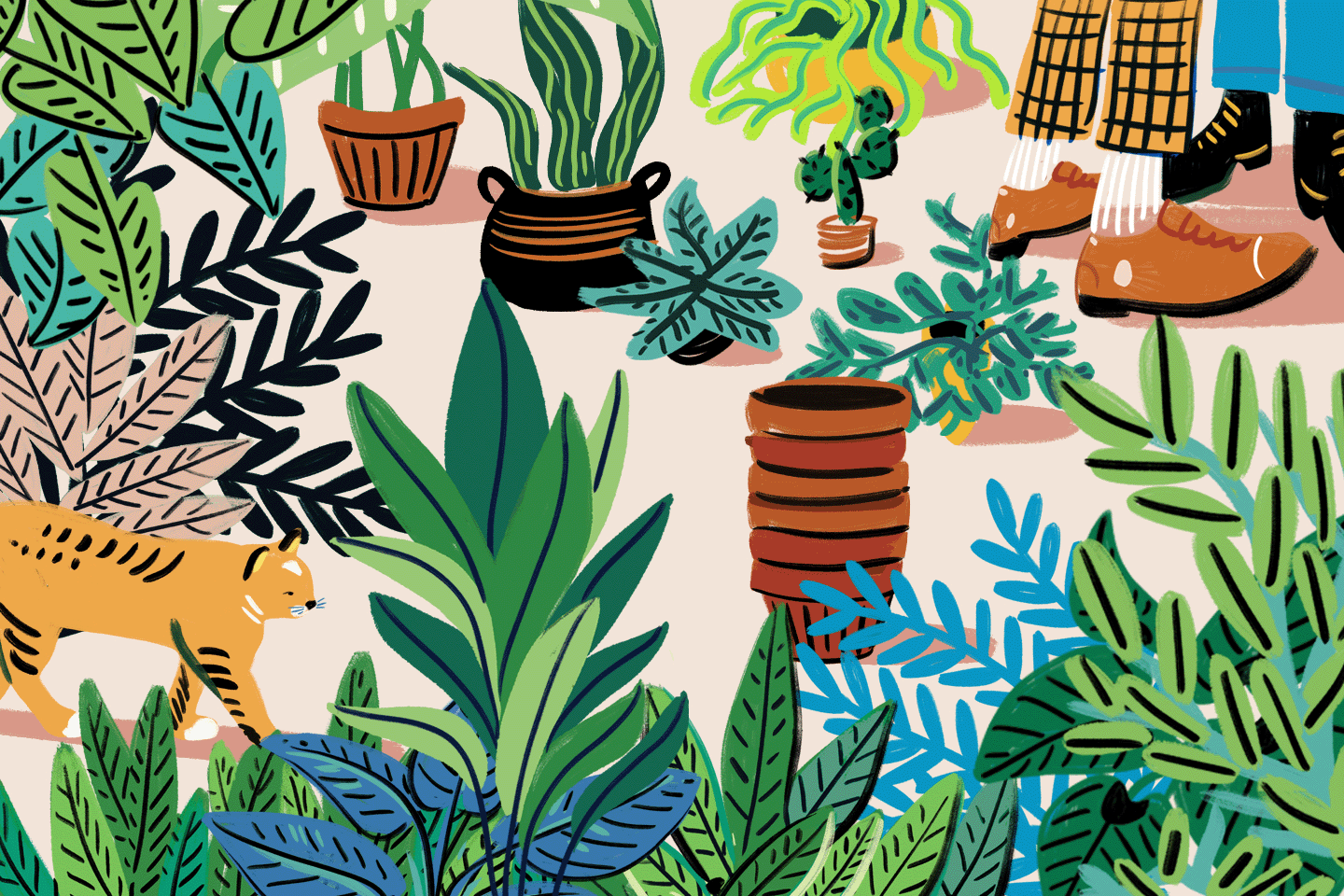Bats snack on annoying mosquitoes. Here’s how to invite them to your yard
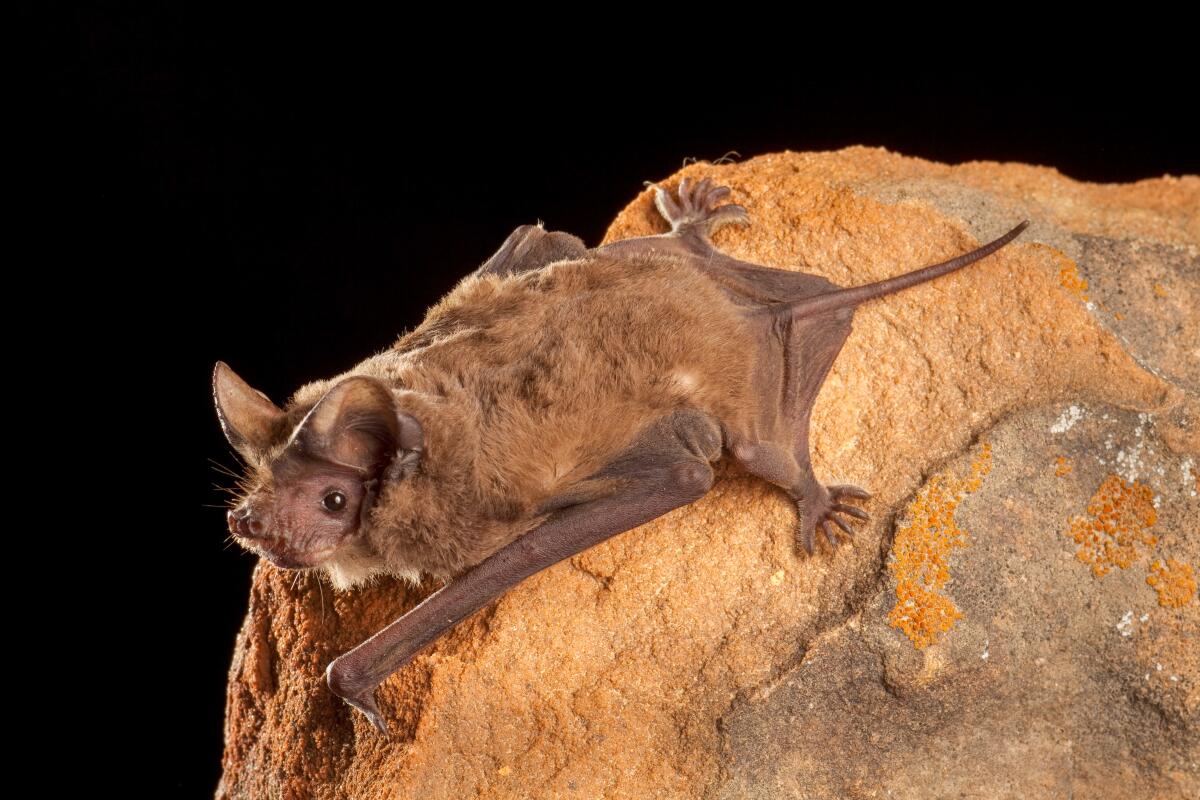
Welcome to the L.A. Times Plants Newsletter, with a list of plant-related activities and events for August and links to articles you might have missed.
But first, a few words about bats — those flying mammals with adorable little faces and absolutely voracious appetites for bugs that bother humans, like moths (whose young chomp our veggies), beetles, flies and even mosquitoes.
It turns out that bats need our help. Urban development, light pollution, pesticides and other “improvements” humanity has wrought on nature have disrupted their habitats.
We rarely see bats because they come out at night, make almost no sounds (audible to humans anyway) and generally do their best to stay out of our way. But boy, would we miss them if they were gone, said Miguel Ordeñana, wildlife biologist and community science manager at the Natural History Museum of Los Angeles County.
“They’re saving billions of dollars for the agriculture industry because they act as a natural pest control, while saving us from even more exposure to pesticides,” Ordeñana said. “They eat hundreds, if not thousands, of insects every night, even in urban areas, because they are very good predators. They keep our insect populations in relative balance.”
Sign up for our L.A. Times Plants newsletter
At the start of each month, get a roundup of upcoming plant-related activities and events in Southern California, along with links to tips and articles you may have missed.
You may occasionally receive promotional content from the Los Angeles Times.
Still, we shouldn’t expect bats to solve all our mosquito problems. They do snack on mosquitoes, especially when they’re out in great numbers, but it takes a lot of them to pack the same caloric punch of one fat moth, Ordeñana said. Moths are the preferred food of the most prominent species around Los Angeles, the caramel-colored Mexican free-tailed bat. Almost all of the 14 or so species around L.A. are insect eaters, except for one Orange County dweller that prefers nectar.
Please note: No blood-sucking bats are flying around Southern California. And bats don’t fly into your hair. That’s just a myth, Ordeñana said. Bats have excellent echolocation navigation systems that steer them far away from humans and other obstacles.
Rabies is a small risk, according to the Los Angeles County Public Health, but only if you do something foolish, like handle a sick or dying bat. Never touch a bat with your bare hands. If you find one in your house or lying on the ground, cover it with a box or a bucket, keep children and pets away and call your local animal control agency. (And while we’re on the topic, make sure your pets’ rabies vaccinations are up to date, because they can carry rabies too.)
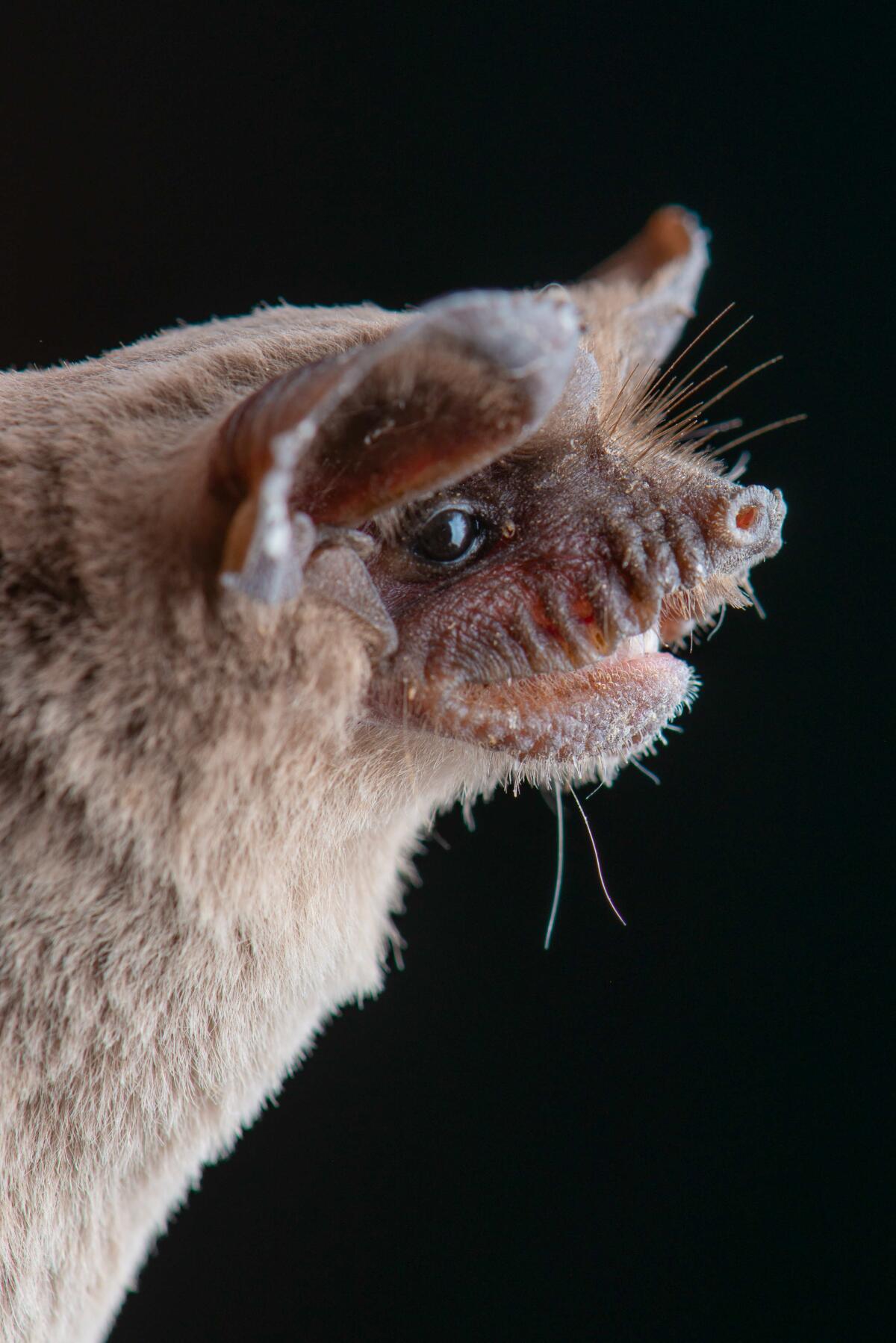
Overall, bats are great neighbors, Ordeñana said. The museum is collecting information about bat roosting areas as part of its Backyard Bat Survey, part of its SuperProject urban biodiversity study supported by community scientists. One of Ordeñana’s favorite sightings so far? A man in Encino who noticed bats flying to and from a tow-away sign on his street where they’d roosted for two years straight.
April showers bring ... mosquitoes. Here are some pointers to help keep them away from your home. Pro tip: Do not leave pools of standing water on your property.
If you’d like to help, the museum has created a special bat observation form on its website to encourage community scientists to keep track of the bats in their neighborhoods. The museum also recruits volunteers to do bat counts at known roosting spots around L.A. County. They had a count in June and will have another Aug. 12-13. Sign-ups were already full by mid-July but you can add your name to the waiting list in case someone drops out.
For the record:
11:30 a.m. Aug. 3, 2023Pallid bats are found mostly outside urban Los Angeles, not in the skies over the Natural History Museum as originally stated in this story.
Ordeñana is also partnering with the Friends of the LA River to lead a Bats and Brews tour along the stream Aug. 22, starting at Frogtown Brewery, for people who want to learn more. One very fun fact: Fossilized remains of pallid bats (Antrozous pallidus) have been found with other Ice Age creatures like saber-toothed tigers in the La Brea Tar Pits, and those bats are still skittering over SoCal today, except now they’re found in more rural areas, like the desert and mountains surrounding L.A., according to Ordeñana.
Bottom line: It’s in our best interest to support bats — they need native plants to attract the insects they crave, a water source, limited light pollution and a place to roost.
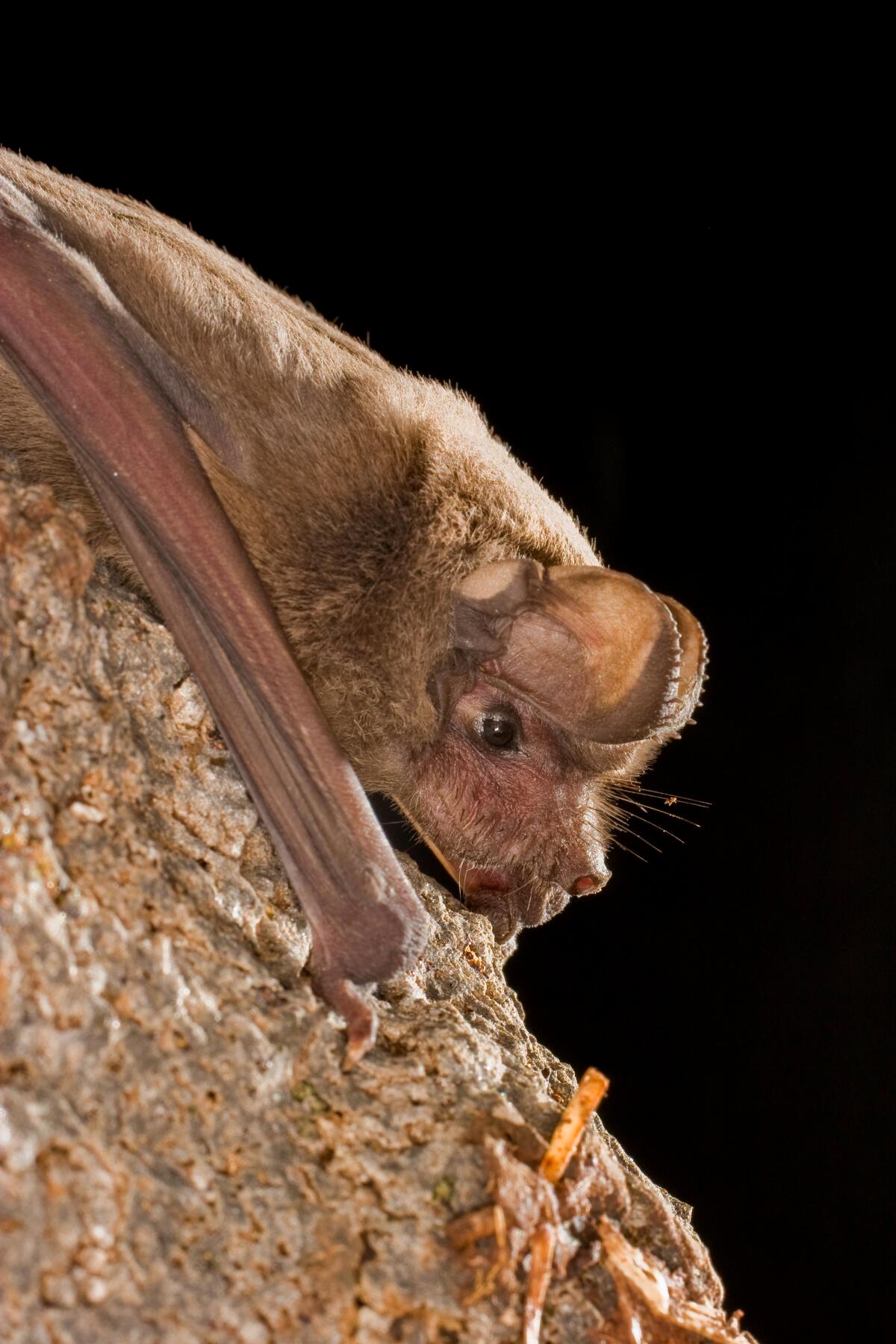
They’re likely already there, maybe roosting in an old tree or palm or man-made structures on the street, Ordeñana said. Bats typically start flying around dusk, so try going outside as it’s getting dark and look toward the lighter sections of the sky so you can more easily spot them. Try to determine where they’re flying from, he said, so you can accurately report their roosting spots for future observation. If you’re really gung-ho, you can invest in a bat detector, such as the Batbox Baton, which lets you hear bats’ ultrasonic calls. The more expensive Echo Meter Touch 2 lets you identify and record bat sounds.
Here are a few other tips:
Be careful about trimming trees. An old tree or palm may look overgrown or ugly to you, but it’s an ideal roosting spot for bats, Ordeñana said. “If you really have to trim your trees, make sure you’re not doing it when they have pups,” he said, typically from April through August.
Mount bat houses on your house, up high. Mounting bat houses on poles or trees makes the bats more vulnerable to predators and extreme heat. Temps are cooler against your house or another structure, but be sure the bat houses are at least 12 to 20 feet off the ground. The bats need some height to fly, said Erin Cord, community engagement manager for Bat Conservation International, which includes instructions for bat abodes on its website. Be patient. It’s hard to coax bats into houses, so don’t give up if they don’t move in right away.
Water sources are necessary but tricky. That’s because bats drink on the wing, Cord said. “They swoop down, open their little mouths and scoop up water as they fly past,” so they need at least 7 to 10 feet of water with no obstructions. Bats will drink out of swimming pools, so if you think bats are sipping at your pool, add an escape ramp, basically a little floating ramp, that helps bats and other animals escape if they fall in.
Kill your outdoor lights or at least switch over to red bulbs, which seem to be less of a problem for bats and other nocturnal animals.
Finally, add as many native plants as you can in your yard or even in pots on your patio. Moths are especially drawn to plants in the nightshade family (Solanaceae), said Tim Becker, horticulture director for the Theodore Payne Foundation. The foundation has created a list of native plants particularly attractive to butterflies and moths, but Becker said lycium shrubs, such as the California Box Thorn (Lycium californicum) are particularly popular. Bat Conservation International also has tips for creating a garden for bats.
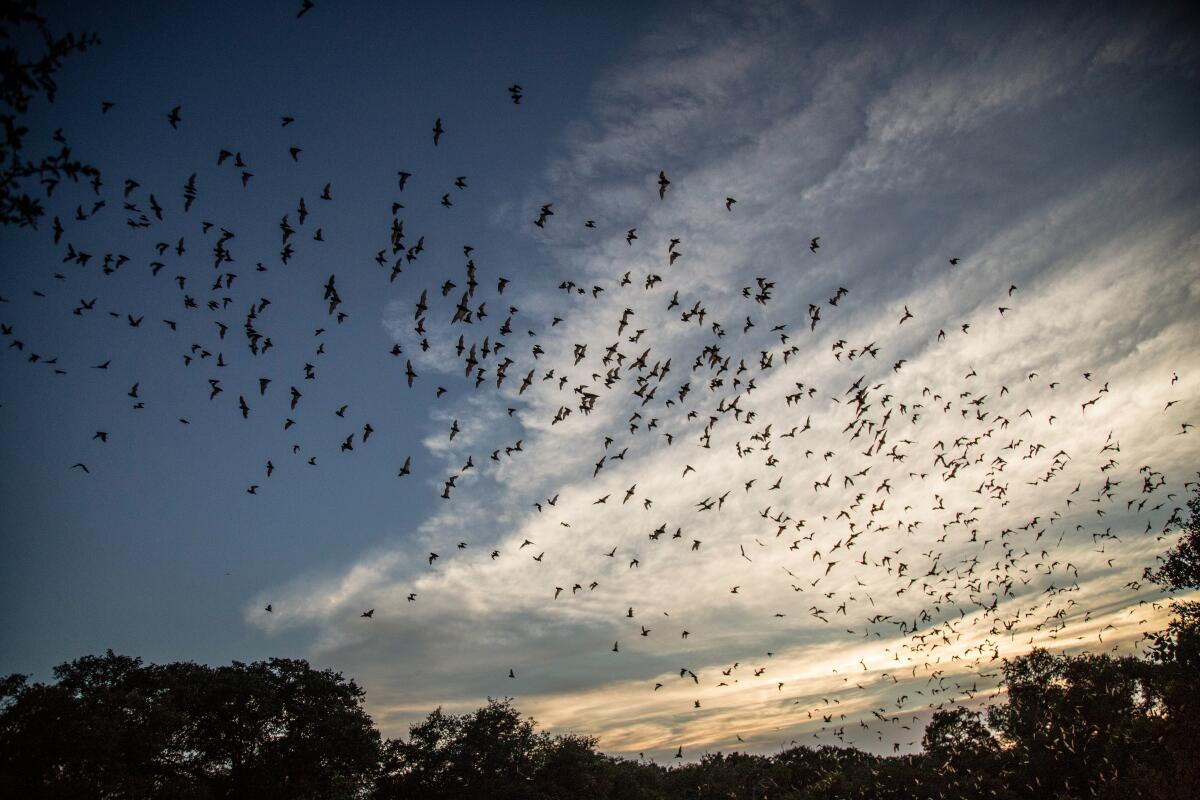
Consider subscribing to the Los Angeles Times
Your support helps us deliver the news that matters most. Become a subscriber.
This month’s events
The heat has finally arrived (has this been the weirdest weather year or what?) but there are still plenty of plant-related classes and activities this month.
If you have an upcoming event you’d like to include in future calendars, email the information to [email protected] by the third week of the month preceding the event, and we’ll try to include it. Feel free to share this email with friends, and encourage them to subscribe too.
Aug. 2
Gardening tips and tasks during the hottest month of the gardening year with Master Gardener Yvonne Savio, a free talk at 6 p.m. at the Katy Geissert Civic Center Library in Torrance. library.torranceca.gov
Aug. 2, 29
Bending the River Tour in the L.A. River, sponsored by Metabolic Studio, 3 p.m. both days.
Bending the River is a project using art and engineering to pull out a small percentage of water in the L.A. River and clean and redistribute it to irrigate nearby city and state parks. The 90-minute tours are free but participants must wear closed-toe, construction area-appropriate shoes, sign a waiver of liability and register in advance. Tours will also be available Tuesdays-Thursdays through Sept. 14. calendly.com
A walk with forager Jessica Tsae-Ni Lin in Fox Hills Park reveals a wealth of edible plants. Lin offers queer and BIPOC foraging workshops and even speed dating.
Aug. 3
Invasive Plant Foraging Stroll, 6-7:30 p.m. at the Garden Willows Wetlands Preserve in Gardena. Certified California naturalist Jason “journeyman” Wise leads an easy walk through the preserve to identify invasive plants, what’s edible and what’s not to create a hyperlocal salad. The $25 tickets include a donation to the preserve. eventbrite.com
Aug. 3, 10 or 17
Native Plant Propagation Thursdays, a chance to volunteer at the Santa Monica Mountains Fund Rancho Sierra Vista native plant nursery from 9 a.m. to noon in Newbury Park and learn the basics of preparing native plants for propagation, transplanting young rooted cuttings into containers and other related activities. The event is free, but you must register in advance. samofund.org
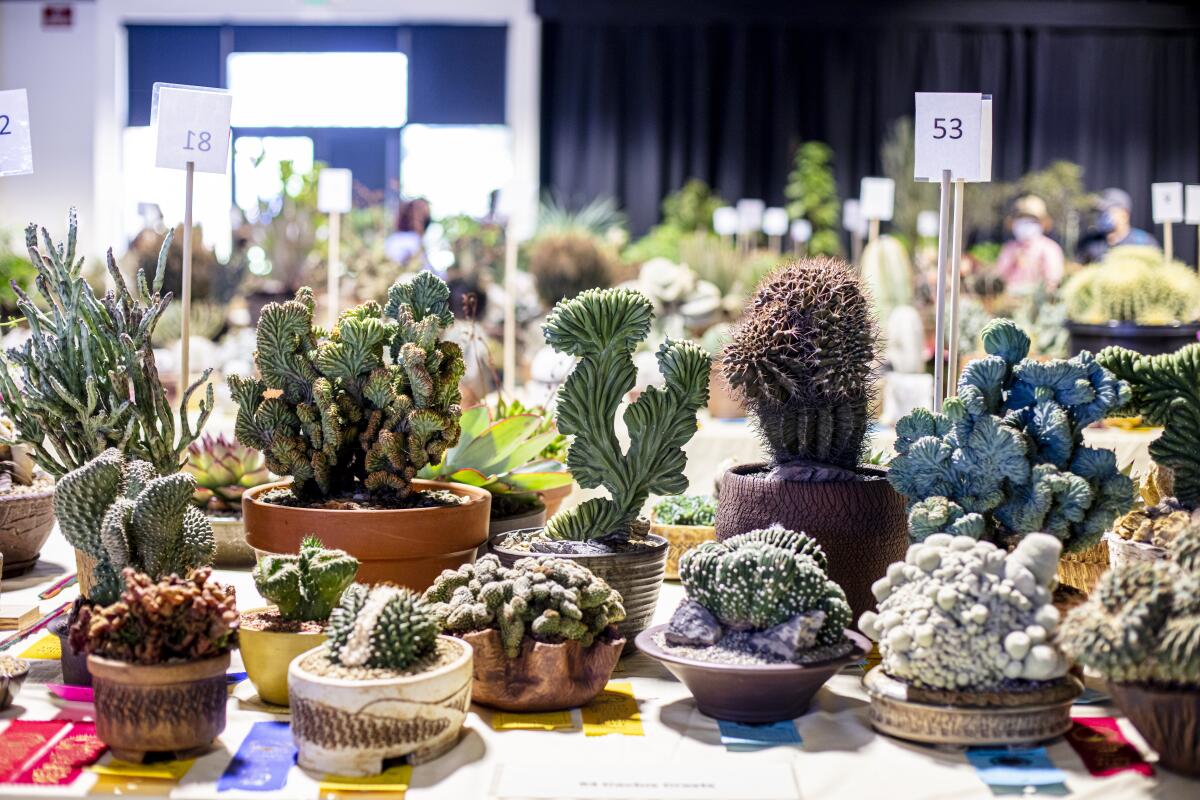
Aug. 4-6
Inter-City Cactus and Succulent Show & Sale, 9 a.m. to 5 p.m. each day at the L.A. County Arboretum & Botanic Garden in Arcadia. The show and sale is free with $15 admission to the garden ($11 for seniors 62+ and students with ID, $5 for children ages 5-12, free for members and children under 5). arboretum.org
Aug. 5
5th Festival of the Butterflies, 10 a.m. to 4 p.m. at Los Rios Park in San Juan Capistrano, to celebrate the park’s certified pollinator garden of native plants especially designed to support monarch butterflies. Admission is free. goinnative.net
How to Propagate Begonias, a talk at the San Fernando Valley Bromeliad Society with begonia grower Ray Van Veen, 10 a.m at the Sepulveda Garden Center in Encino. Admission is free. sfvbromeliad.homestead.com
Jana Johnson rebuilt her shattered life by thinking differently and nursing the nearly extinct Palos Verdes blue butterfly back from the brink.
Aug. 5, 12 & 20
Berry Fair at Stone Soup Farm & Heritage Orchard, 10 a.m. to 4 p.m. in Oak Glen. The $10-per-person admission fee (children under 3 enter free) allows visitors to wander the regenerative farm, learn how to create lavender bundles, participate in ice cream making (and tasting) and visit the Children’s Garden and Activity Center. For an additional fee, visitors can also pick their own blackberries ($7 a pint). Buy tickets online. stonesoupfarmca.com
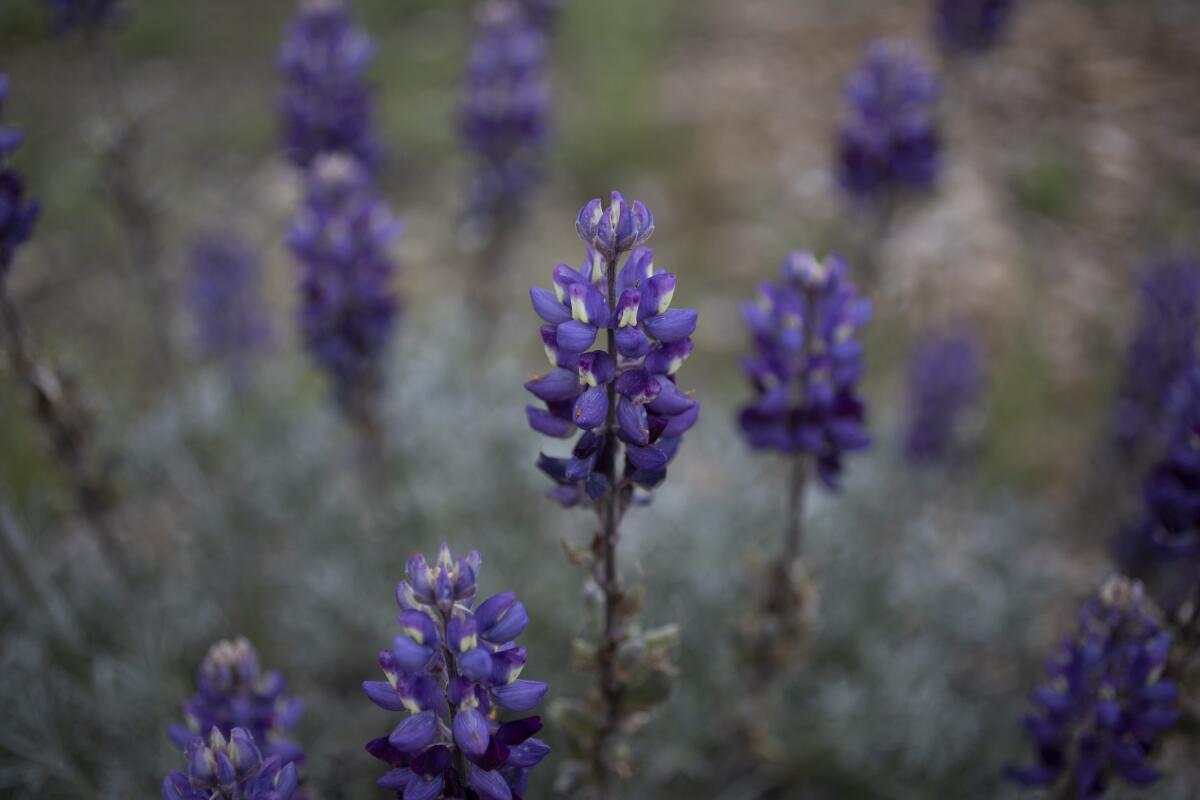
Aug. 10
Native Plant Container Gardening, a Theodore Payne Foundation workshop from 9 to 10:30 a.m. at the foundation’s pergola in Sun Valley. Purchase tickets online, $25 ($20 members). eventbrite.com
Celebrating Seed: Gathering, Processing and Storing Native Seed, a Theodore Payne Foundation workshop from 1 to 3:30 p.m. at the foundation’s pergola in Sun Valley. Purchase tickets online, $25 ($20 members). eventbrite.com
Barbara Chung fell in love with native plants, but she didn’t have a yard. So she created a habitat garden in pots on her tiny townhouse patio in Santa Monica.
Aug. 12
Hiro’s Bokashi Workshop + Plant Swap, a workshop sponsored by the Japanese American Cultural & Community Center and Sustainable Little Tokyo, 1 to 3 p.m. at the Zenshuji Soto Mission in downtown L.A. Learn the Okinawan tradition of Bokashi composting. The workshop is free, but supplies to make one bag of bokashi are $5, or $30 for a kit. Participants are also invited to bring plant clippings, seeds and garden produce to swap with others. Pre-register at jaccc.org
South Bay Bromeliad Associates Bromeliad Show and Sale, 10 a.m. to 4 p.m. at the Palos Verdes Art Center in Rancho Palos Verdes. Admission is free. pvartcenter.org
Aug. 12, 26
Growing Works public retail sale of native plants and succulents, 10 a.m. to 2 p.m. at the normally wholesale-only nursery in Camarillo. Admission is free. turningpointfoundation.org
Palos Verdes Peninsula Land Conservancy Nursery Native Plant sales, 10:30 a.m. to 1 p.m. both days, at George F. Canyon Nature Center in Rolling Hills Estates, on Aug. 12 and the second Saturday of every month going forward. Also at the White Point Nature Education Center in San Pedro on Aug. 26, and the fourth Saturday of every month thereafter. plpvc.org
Outdoor Volunteer Days to restore habitat at Palos Verdes Peninsula Land Conservancy, 9 a.m. to noon both days at the Alta Vicente Reservein Rancho Palos Verdes. Volunteers must register in advance. pvplc.volunteerhub.com
Aug. 14
Nature’s Geometry — Succulents, a talk by Russel Ray about how the Fibonacci sequence of numbers is exhibited in nature, for the monthly meeting of the South Coast Cactus & Succulent Society from 1 to 4 p.m. at the South Coast Botanic Garden in Rolling Hills Estates. southcoastcss.org
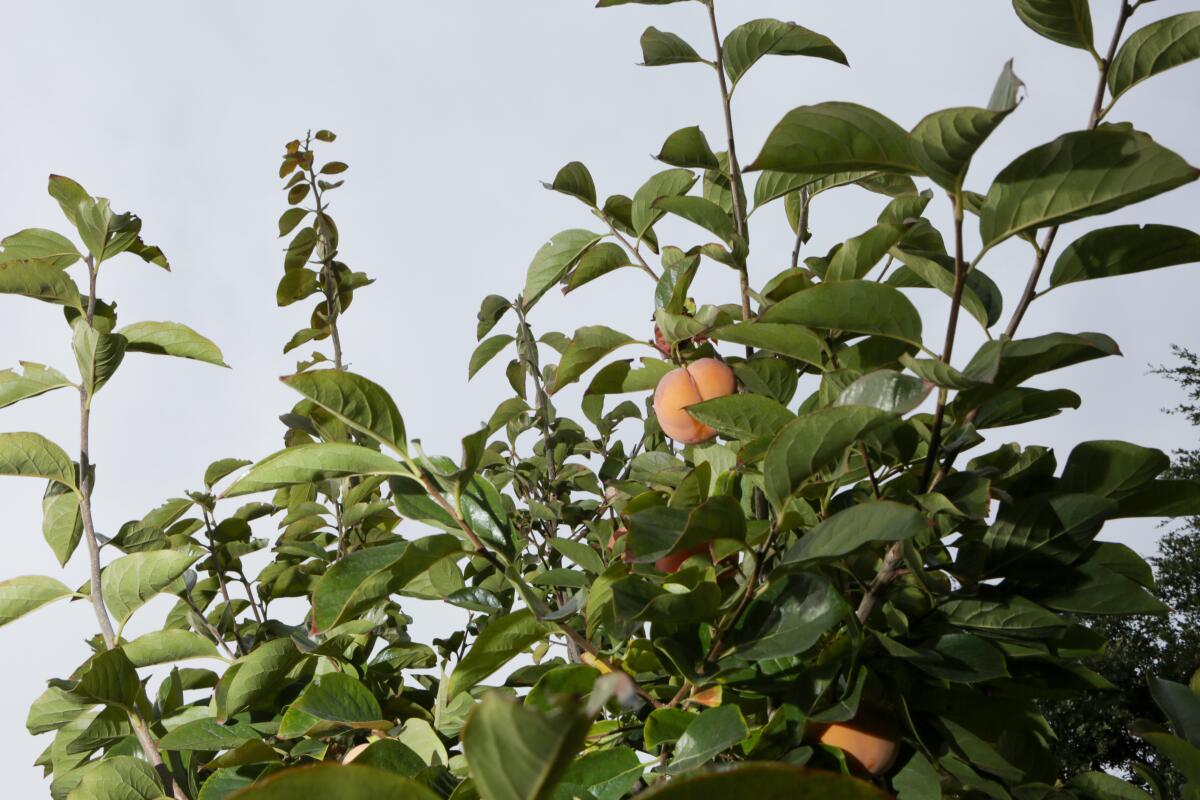
Aug. 19
Summer Fruit Tree Pruning and Autumn Orchard Care Workshop by the Los Angeles County Master Gardener orchard team, 8 a.m. to noon at the Master Gardener Demonstration Garden and Orchard at Carmelitos Urban Farm in Long Beach. Admission is free. Participants must wear protective eyewear and bring their own clean, sharp tools. Personal water bottles, gloves, hat, sunscreen and closed-toe shoes are recommended. celosangeles.ucanr.edu
Instead of a lawn, Jose Ramirez planted 250 trees, including avocados, limes, apples, mangoes and even coffee beans in his Boyle Heights yard.
Aug. 21
Fire-Resilient Gardens: Introductory Maintenance Techniques, a Theodore Payne Foundation workshop from 9 to 10:30 a.m. at the foundation’s demonstration gardensin Sun Valley. Purchase tickets online, $15 ($12 members). eventbrite.com
Aug. 26
Herb Walk with Herb Club L.A. led by co-founder Andrea Jimenez. An easy walk to identify native plants of L.A., with a special focus on plants of the chaparral, especially those that can best withstand summer heat, from 11 a.m. to 1 p.m. starting at the Gabrielino Trail Western Trailhead in Altadena. usalproject.com
Habitat Restoration Day, 8 to 11 a.m. at the Sepulveda Basin Wildlife Reserve in Lake Balboa. Help the Friends of the LA River, California Native Plant Society, and San Fernando Valley Audubon remove invasive plants in the reserve. The free event also includes bird walks. folar.org
From tiny storefronts to longtime family-run institutions, we curated this list of our favorite places to shop for houseplants in and around L.A.
Introduction to Succulents, a free workshop at 10 a.m. taught by John Martinez, co-founder of the Conejo Cactus and Succulent Society in Thousand Oaks and a member of the Cactus and Succulent Society of America’s board of directors, at Growing Works Nursery in Camarillo. Pre-registration is requested. eventbrite.com
What we’re reading
- Rachel Nafis wanted to grow flowers to sell, but her San Diego home didn’t have enough land. So she recruited some nearby residents. Now, all the neighbors know who she is. Here’s how she built a flower farm across eight yards.
- Don’t try this at home: Severe pruning during the summer heat is hell for trees, not just striking actors.
- Brian Bautista used his free time during the COVID-19 pandemic to transform the landscape around his Inglewood home. He wanted a ‘low-water, colorful, smell-good garden.’ But first, the lawn had to go.
- If you’re itching to grow things, urban farmer Taylor Lindsey has a solution, no matter what your situation. No yard? No problem. She’ll teach you to grow mobile gardens that’ll shift your thinking.
- L.A. has a long history of family-owned specialty nurseries, but when land values are so high, and the new generation isn’t interested, many have closed their doors. Now another famous nursery appears to be following suit: Where have all the camellias gone? A bittersweet end for historic Nuccio’s Nurseries.
- Here’s another OMG reason to replace your lawn. Opinion: Why your green grass is making the temperature rise.
- Finally, this isn’t a plant article per se, but it is a moving and meaningful story about meditation — something I do unconsciously every time I kneel to weed or dig — and death, which is a regular part of any gardener’s life. Consider this something to chew on the next time you visit your plants. Meditating on my death made me feel thrilled to be alive.
Sign up for The Wild
We’ll help you find the best places to hike, bike and run, as well as the perfect silent spots for meditation and yoga.
You may occasionally receive promotional content from the Los Angeles Times.
